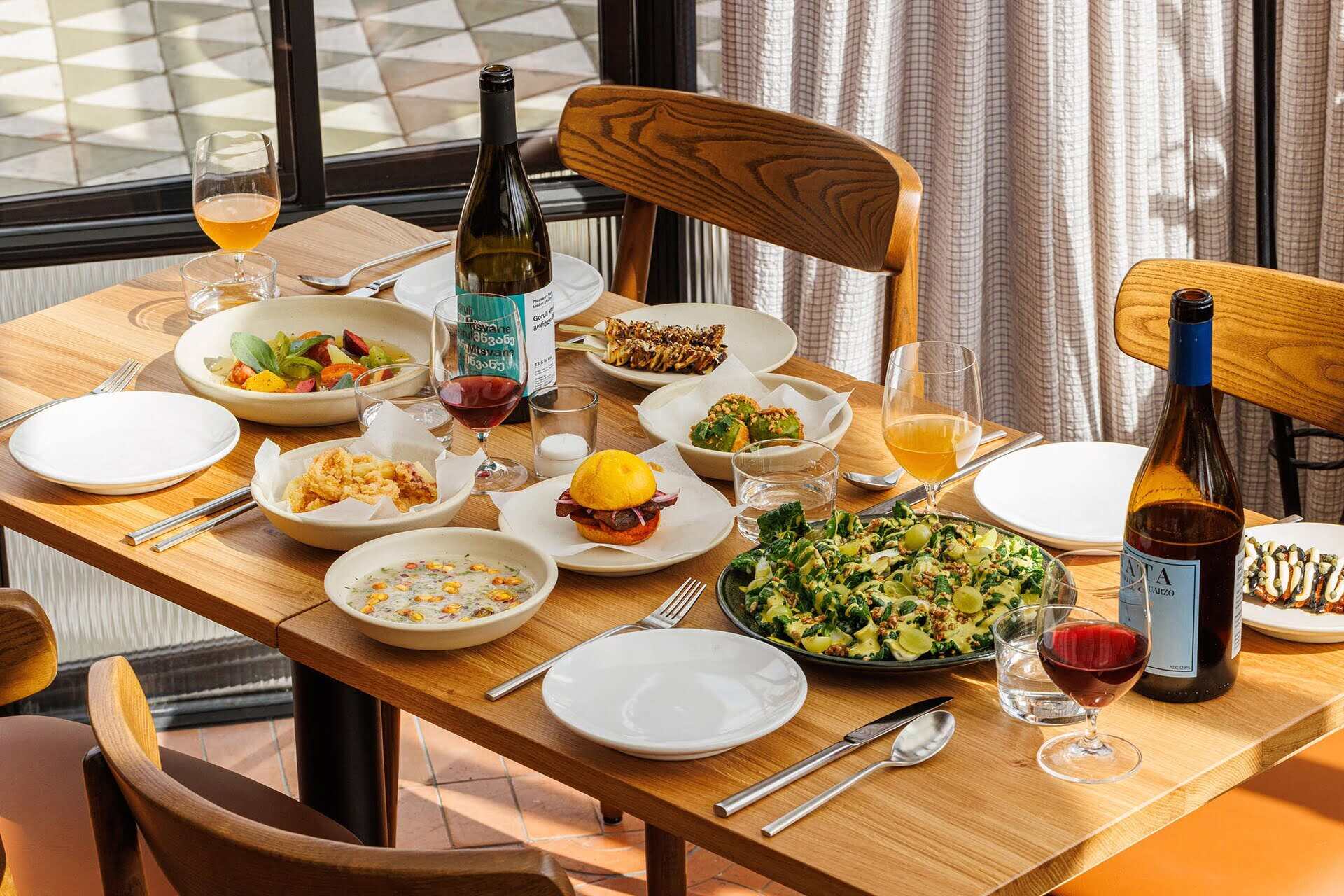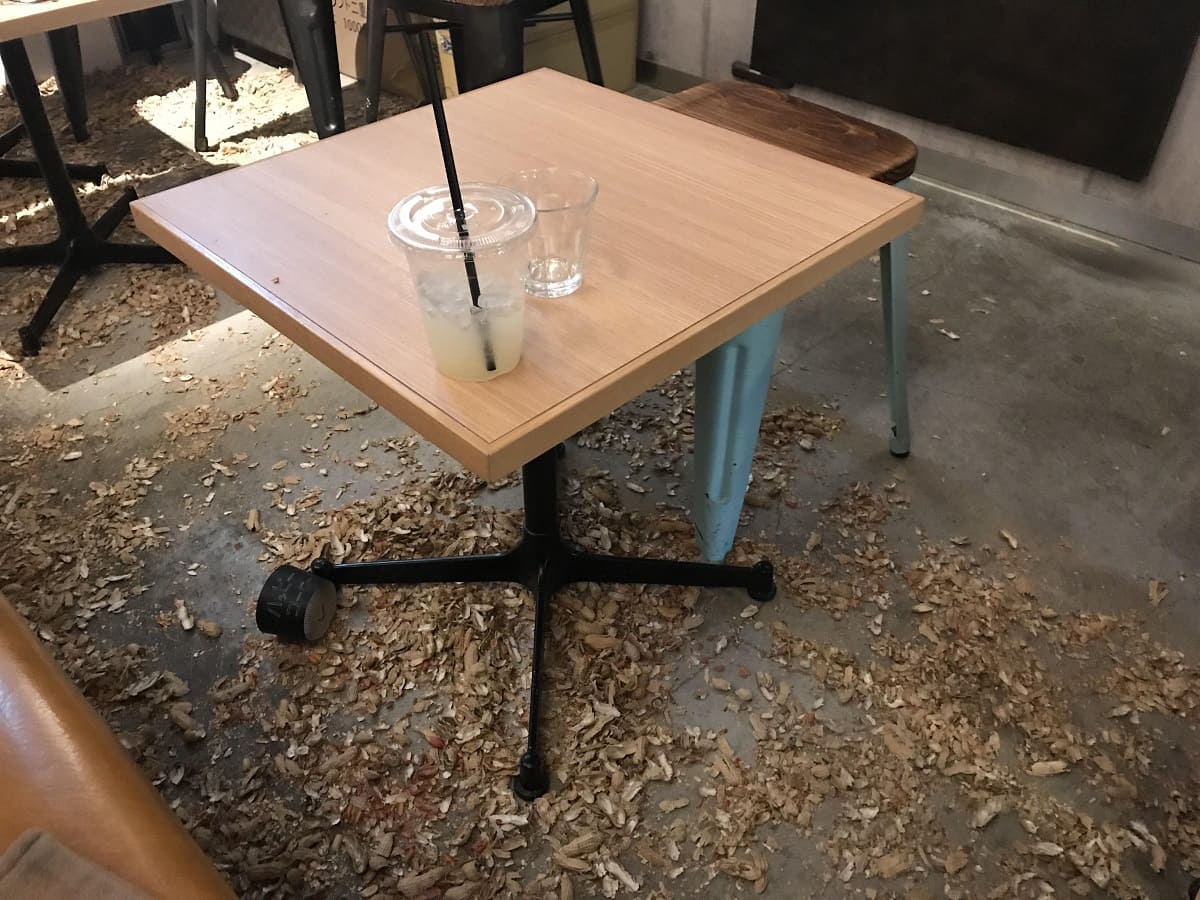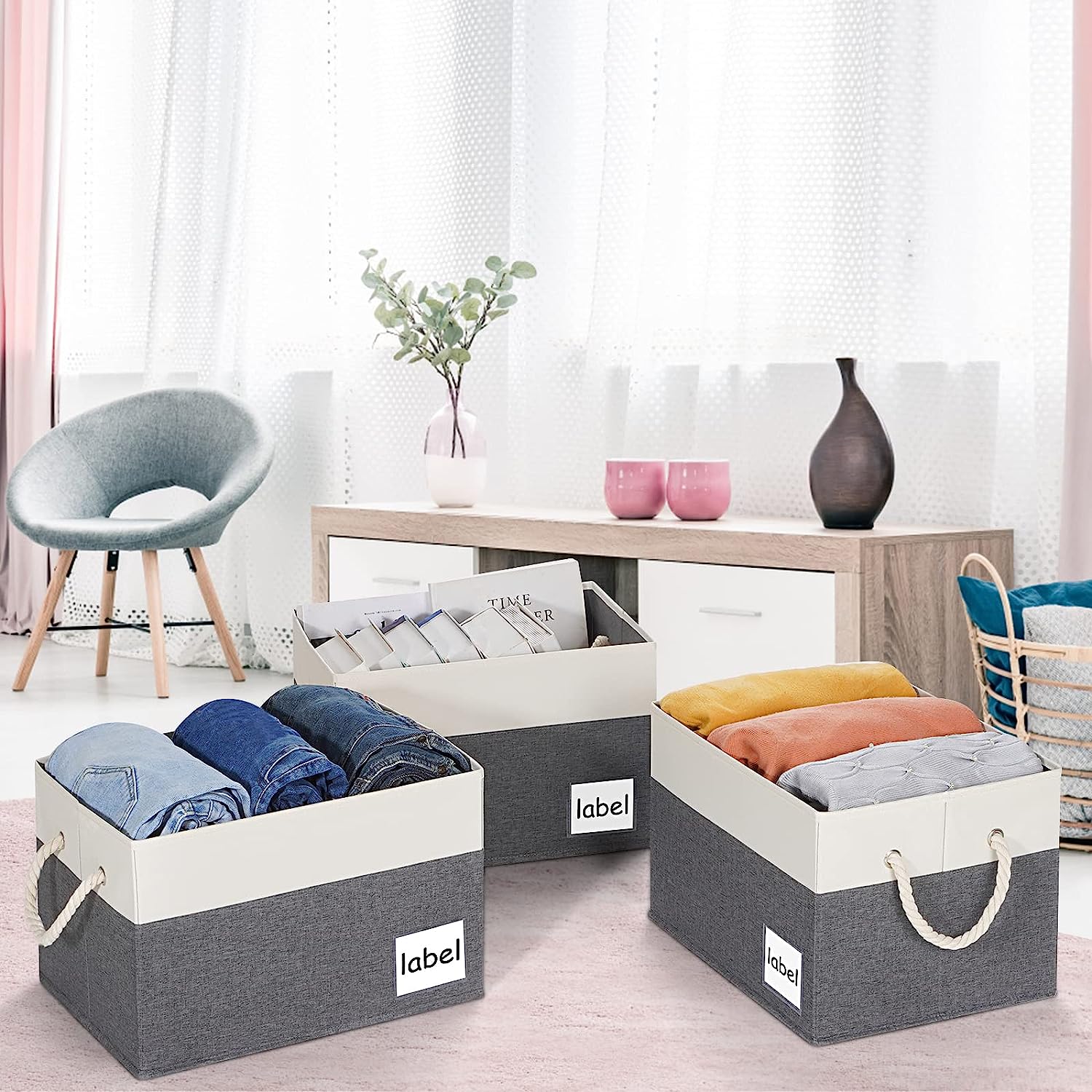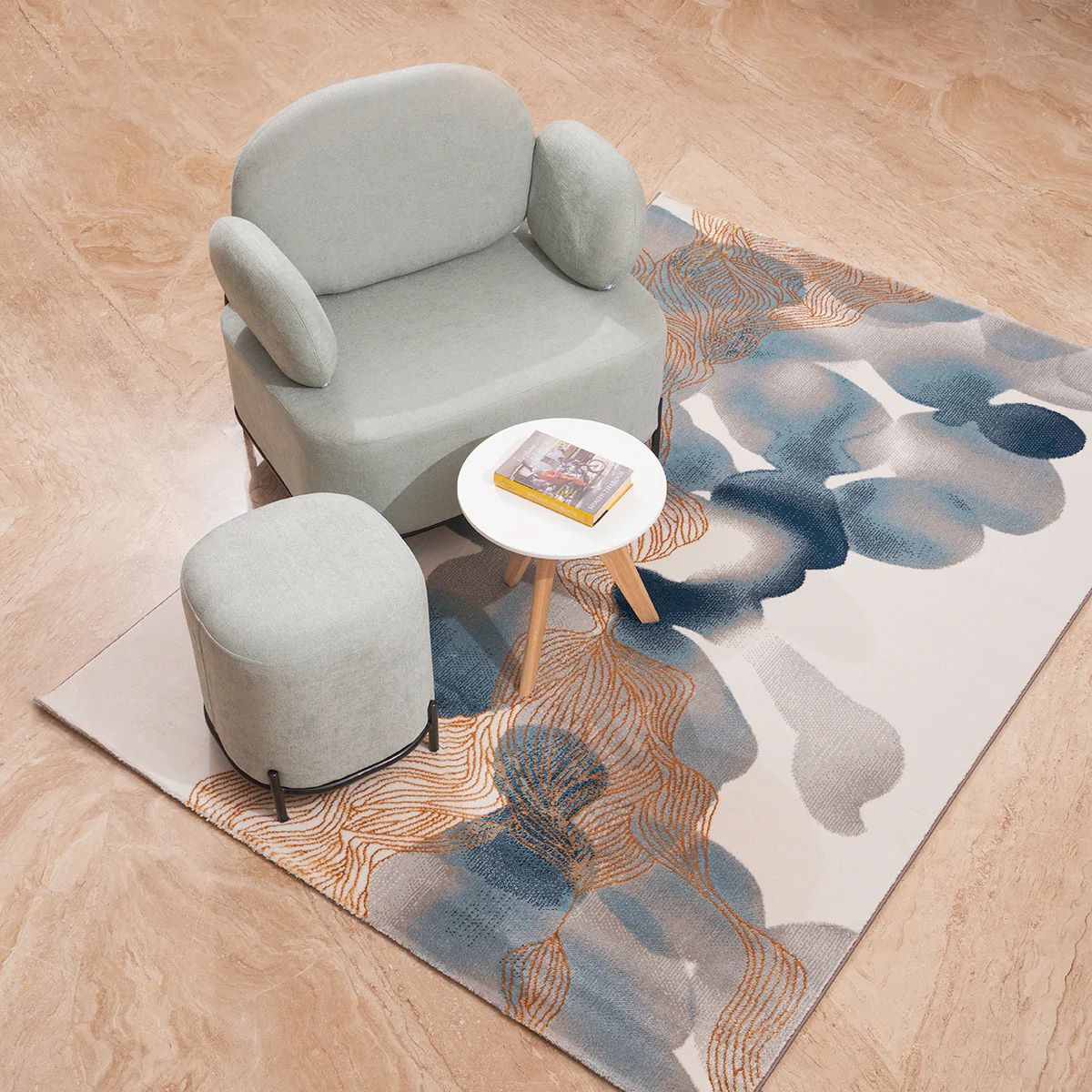Home>Dining>Tableware>Why Is It Important For Restaurants To Have Tableware?


Tableware
Why Is It Important For Restaurants To Have Tableware?
Modified: January 19, 2024
Discover why tableware plays a vital role in restaurants. Enhance dining experiences and create a lasting impression. Find the best tableware for your establishment today!
(Many of the links in this article redirect to a specific reviewed product. Your purchase of these products through affiliate links helps to generate commission for Storables.com, at no extra cost. Learn more)
Introduction
Tableware plays a crucial role in the dining experience at restaurants. From the plates and glasses to the cutlery and table linens, these elements not only serve practical purposes but also contribute to the overall atmosphere and branding of the establishment. Whether it’s a casual café, an upscale fine dining restaurant, or a trendy bistro, the quality and selection of tableware can greatly impact the perception and satisfaction of customers.
In this article, we will explore the importance of tableware for restaurants and how it can enhance the dining experience, reflect the establishment’s style and theme, create a memorable brand identity, promote hygiene and safety, increase customer satisfaction and loyalty, influence food presentation and perception, and provide practicality and functionality.
So, why is it crucial for restaurants to invest in high-quality, well-designed tableware?
Key Takeaways:
- Tableware enhances the dining experience by engaging the senses, creating a unique atmosphere, and adding practicality to the meal, leaving a lasting impression on restaurant patrons.
- Well-chosen tableware reflects a restaurant’s style, builds brand identity, and promotes hygiene and safety, contributing to customer satisfaction, loyalty, and the overall success of the establishment.
Read more: Why Is A First Aid Kit Important To Have
Enhancing the Dining Experience
Tableware plays a significant role in enhancing the overall dining experience for customers. The presentation of food and beverages on thoughtfully selected and aesthetically pleasing tableware can elevate the enjoyment and satisfaction of a meal.
Imagine sitting down at a restaurant and being served a beautifully plated dish on a stylish and well-coordinated plate. The visual appeal of the presentation instantly captures your attention and creates a sense of anticipation. The weight, texture, and design of the cutlery and glassware also contribute to the tactile experience and add to the overall sensory pleasure of dining.
Additionally, the choice of table linens, such as tablecloths and napkins, can further enhance the dining ambiance. Crisp and clean linens create an elegant and refined atmosphere, while vibrant and patterned linens can add a touch of playfulness or cultural flair.
By carefully selecting tableware, restaurants can create a unique and memorable experience for their guests. From casual dining establishments to high-end restaurants, the quality and design of the tableware can set the tone and create a lasting impression.
Furthermore, tableware can also contribute to the functionality and convenience of dining. Well-designed plates and bowls with appropriate sizes and shapes can make it easier for customers to enjoy their meals. Ergonomically designed cutlery and glassware can provide comfort and ease of use, enhancing the overall dining experience.
Overall, investing in high-quality and thoughtfully designed tableware can enhance the dining experience, engage the senses of customers, and leave a lasting impression. It is an essential element in creating a pleasant and enjoyable atmosphere for patrons.
Reflecting the Restaurant’s Style and Theme
Tableware not only serves the practical purpose of holding and presenting food, but it also contributes to the overall aesthetic and theme of a restaurant. The choice of tableware can reflect the establishment’s style, ambiance, and brand identity.
For example, a rustic and cozy restaurant may opt for earthy-toned plates and bowls, rustic ceramic mugs, and textured wooden serving boards. This choice of tableware helps to create a warm and inviting atmosphere that complements the restaurant’s rustic theme.
In contrast, a modern and minimalistic restaurant may choose sleek and simple white plates, geometric-shaped glassware, and stainless steel flatware. This minimalist tableware enhances the restaurant’s contemporary style and adds a touch of elegance to the dining experience.
Restaurants with specific cultural themes can also utilize tableware to reinforce their identity. For instance, a sushi restaurant may use traditional Japanese sushi plates and soy sauce dishes, while an Italian restaurant may showcase colorful pasta bowls and rustic bread baskets.
By aligning the tableware with the restaurant’s style and theme, a cohesive and immersive dining experience is created. When customers step into the restaurant, they are immediately transported into a specific atmosphere, and the tableware becomes an integral part of that experience.
Furthermore, the tableware can also be an extension of the restaurant’s branding. It can feature the restaurant’s logo or insignia, contributing to brand recognition and creating a sense of exclusivity.
Overall, tableware plays a vital role in reflecting the restaurant’s style, theme, and brand identity. It adds visual appeal, enhances the overall atmosphere, and helps to create a cohesive dining experience that aligns with the restaurant’s vision.
Creating a Memorable Brand Identity
Tableware is not only a functional item but also an opportunity for restaurants to establish a memorable brand identity. Well-designed and distinctive tableware can help a restaurant stand out from the competition and leave a lasting impression on customers.
When customers see unique and eye-catching tableware, it sparks curiosity and creates a sense of intrigue. It becomes a talking point and adds a layer of interest to the dining experience. Customers may even take photos or share their experience on social media, further promoting the restaurant’s brand.
By incorporating elements of the restaurant’s logo, colors, or design motifs into the tableware, a cohesive and recognizable brand identity is created. This reinforces the restaurant’s image and helps to build brand loyalty among customers.
Consider a restaurant that specializes in organic and farm-to-table cuisine. By using tableware made from sustainable and eco-friendly materials, such as bamboo plates or recycled glassware, the restaurant is demonstrating its commitment to its values, and this resonates with environmentally conscious customers.
In addition, custom-designed tableware can add a touch of exclusivity to the dining experience. This can be achieved through limited-edition collaborations with local artisans or renowned designers, resulting in one-of-a-kind tableware that is unique to the restaurant.
Creating a memorable brand identity through tableware goes beyond aesthetics. It also involves the quality and durability of the items. Investing in high-quality tableware that withstands frequent use and maintains its appearance over time reinforces the perception of the restaurant’s commitment to excellence.
Overall, the tableware used by a restaurant plays a vital role in creating a memorable brand identity. It helps to differentiate the establishment from its competitors, enhances the overall dining experience, and fosters brand loyalty among customers.
Promoting Hygiene and Safety
Tableware in restaurants serves an important practical purpose by promoting hygiene and safety standards. The cleanliness and sanitation of tableware are crucial for ensuring the well-being of customers and maintaining a positive dining experience.
Restaurants must adhere to strict health and safety regulations, including proper cleaning and sanitization of tableware. This involves thorough washing, rinsing, and drying of plates, utensils, glassware, and other items used in food service.
High-quality tableware with smooth surfaces and durable materials makes it easier to maintain cleanliness and prevent the growth of bacteria or contamination. Non-porous materials, such as porcelain or stainless steel, are less likely to retain food particles or absorb odors, reducing the risk of cross-contamination.
Additionally, the design of tableware can also promote safe handling and serving of food. Plates with raised edges or compartments can help prevent spills or mixing of different food items. Glasses with sturdy bases and well-balanced weight distribution reduce the chances of accidental tipping or breaking.
In recent times, hygiene and safety have become even more critical due to the COVID-19 pandemic. Restaurants have implemented additional protocols to ensure the sanitization of tableware between each use. Utensils and glassware may be individually wrapped or provided in sealed packaging to minimize contact and enhance customer confidence.
Transparent communication about hygiene practices can also be incorporated into the restaurant’s branding. Assuring customers of the rigorous cleaning processes and sanitation measures taken with the tableware can build trust and help them feel safe while dining at the establishment.
Overall, the tableware used in restaurants plays a crucial role in promoting hygiene and safety. By choosing high-quality materials, adhering to strict cleaning protocols, and incorporating safe handling designs, restaurants can provide an environment that prioritizes the well-being of their customers.
Invest in durable and versatile tableware that complements your restaurant’s theme. Quality tableware enhances the dining experience and reflects the restaurant’s brand.
Increasing Customer Satisfaction and Loyalty
Tableware has a significant impact on customer satisfaction and loyalty. When customers dine at a restaurant, they not only expect delicious food but also an enjoyable overall experience. The choice of tableware can greatly influence their perception and satisfaction levels.
By investing in high-quality and visually appealing tableware, restaurants can create a positive first impression. Customers appreciate attention to detail, and the presentation of food on well-designed plates and bowls enhances the perceived value of the meal.
Imagine being served a gourmet dish on a chipped or mismatched plate; it can significantly detract from the dining experience. On the other hand, carefully selected tableware that complements the food presentation can elevate the experience and leave a lasting impression on customers.
Consistency in the tableware used throughout the restaurant also contributes to a sense of professionalism and attention to detail. When customers see consistent and well-maintained tableware, it creates a perception of reliability and consistency in the overall dining experience.
In addition, the comfort and functionality of the tableware also enhance customer satisfaction. Well-designed cutlery and glassware that feel comfortable to hold and use contribute to a more enjoyable dining experience. The weight, balance, and size of the utensils can greatly impact the ease of eating and drinking.
By consistently providing a positive dining experience with quality tableware, restaurants can foster customer loyalty. Satisfied customers are more likely to return and recommend the restaurant to others. They become loyal patrons who appreciate the attention to detail and the effort put into creating an exceptional dining experience.
Moreover, the tableware can also serve as a subtle reminder of their positive experience. When customers see the same tableware in other contexts, such as advertisements or social media posts, it can evoke pleasant memories and further reinforce their loyalty to the restaurant.
Incorporating personalized touches, such as using tableware customized with the restaurant’s logo or design, can also create a sense of exclusivity and make customers feel like they are part of a special community or club.
Overall, by investing in high-quality, visually appealing, and well-designed tableware, restaurants can greatly increase customer satisfaction and foster loyalty. The tableware becomes an integral part of the overall dining experience, leaving a lasting impression on customers and encouraging them to return.
Influencing Food Presentation and Perception
Tableware plays a crucial role in influencing the presentation and perception of food in restaurants. The way in which food is presented can greatly impact the overall dining experience and customers’ perception of the quality and value of a meal.
The choice of plates, bowls, and serving platters can enhance the visual appeal of a dish. Well-coordinated tableware can accentuate the colors, textures, and arrangement of the food, making it more visually enticing. It can transform a simple dish into a culinary work of art.
Restaurants often take great care in selecting tableware that complements their culinary style and showcases their dishes in the best possible way. For example, a fine dining restaurant may opt for minimalistic white plates to allow the vibrant colors of the food to stand out, while a trendy fusion restaurant may choose unconventional and artistic plates to match their innovative and creative cuisine.
Additionally, the size and shape of the tableware can also influence portion perception. Larger plates can make portions seem smaller, while smaller plates can create the illusion of larger portions. This can indirectly affect customers’ perception of value and satisfaction with their meal.
Specialized tableware, such as sushi plates or tapas dishes, can enhance the authenticity and cultural experience of a specific cuisine. The use of traditional or regional tableware can transport customers to a different time and place, adding to the overall dining experience.
Not only does tableware impact the visual presentation of food, but it also affects the overall dining experience and expectations. When customers see well-curated and aesthetically pleasing tableware, they anticipate a higher level of food quality and attention to detail. This can influence their perception even before they taste the first bite.
The presentation of food on high-quality tableware can evoke a sense of sophistication and elegance. It sets a tone of refinement and suggests that the restaurant cares about delivering a memorable and exquisite dining experience.
Overall, tableware has a significant influence on the presentation and perception of food in restaurants. The choice of plates, bowls, and serving dishes can enhance the visual appeal, influence portion perception, and set expectations for the overall dining experience. By selecting appropriate tableware, restaurants can elevate the presentation of their culinary creations and leave a lasting impression on customers.
Providing Practicality and Functionality
Tableware in restaurants serves a practical purpose beyond aesthetics. It is designed to provide functionality and convenience for both the customers and the restaurant staff.
One of the key aspects of practicality is the durability of the tableware. Commercial-grade tableware is specifically designed to withstand the daily rigors of a restaurant environment, including frequent use, handling, washing, and stacking. It is made from materials that are resistant to chipping, scratching, and breaking, ensuring longevity and cost-effectiveness for the restaurant.
Tableware also needs to be easy to clean and maintain. It should be dishwasher-safe and resistant to staining or discoloration. This not only saves time and effort for the restaurant staff but also ensures a hygienic and sanitary dining experience for customers.
The functionality of tableware extends to its design and shapes. Plates with raised edges or compartments can prevent food from mixing or spilling, maintaining the integrity of the dish. Bowls with handles or wide rims make it easier to handle and serve hot dishes without the risk of burns. Cutlery with comfortable grip handles and proper weight distribution enhances the ease of eating.
In addition, the size and shape of the tableware should be practical and suitable for the type of cuisine served. For example, deep bowls are ideal for serving soups or pasta, while flat plates are better suited for presenting grilled meats or salads. The proper sizing ensures that portions are appropriately served, and the food presentation is aesthetically pleasing.
Tableware should also be stackable and easy to store, optimizing space in the restaurant’s kitchen or storage areas. This allows for efficient organization and accessibility for the staff, reducing clutter and maximizing efficiency during busy service periods.
In fast-paced restaurants, where speed and efficiency are crucial, tableware that is lightweight and easy to handle can streamline the serving process. This ensures smooth and timely service to customers and helps maintain a positive dining experience.
Furthermore, the practicality of tableware extends to customer convenience. For example, glassware with ergonomic designs can enhance the drinking experience, allowing customers to comfortably hold and sip their beverages. Spill-resistant features, such as wine glasses with tapered rims, minimize the chances of accidental spills.
Overall, tableware in restaurants is not only about aesthetics but also about providing practicality and functionality. Durable, easy-to-clean, and well-designed tableware improves efficiency, enhances the dining experience for both customers and staff, and contributes to the overall success of the restaurant.
Conclusion
Tableware holds immense importance in restaurants, going beyond its functional purpose. It plays a crucial role in enhancing the dining experience, reflecting the restaurant’s style and theme, creating a memorable brand identity, promoting hygiene and safety, increasing customer satisfaction and loyalty, influencing food presentation and perception, and providing practicality and functionality.
The selection of high-quality tableware contributes to the overall ambiance and atmosphere of the restaurant, creating a visually appealing and inviting space for customers. It sets the stage for an exceptional dining experience by capturing attention and anticipation through thoughtfully designed plates, cutlery, glassware, and table linens.
Tableware serves as a reflection of the restaurant’s style and theme, with carefully chosen pieces creating a cohesive and immersive dining experience. It reinforces the restaurant’s brand identity, creates a sense of exclusivity, and leaves a lasting impression on customers.
Promoting hygiene and safety standards is paramount in the restaurant industry. Tableware that is easy to clean, sanitizable, and made from durable materials ensures a sanitary dining experience for customers. Transparent communication about hygiene practices can build trust and confidence among patrons.
The choice of tableware greatly influences customer satisfaction and loyalty. Well-designed and visually appealing tableware enhances the presentation of food, increases perceived value, and contributes to a positive dining experience. By investing in quality tableware, restaurants can foster customer loyalty and encourage repeat visits.
Tableware also impacts food presentation and perception, enhancing the visual appeal of dishes and influencing portion perception. It can create a sense of sophistication, authenticity, or cultural immersion, adding to the overall dining experience.
Practicality and functionality are essential considerations in tableware selection, offering durability, ease of cleaning, proper sizing, and stackability for efficient storage and serving processes. Tableware that provides comfort and convenience for customers enhances their dining experience.
In conclusion, tableware is not just a means to serve food; it is an integral part of the restaurant experience. By investing in high-quality, well-designed tableware, restaurants can create a memorable and enjoyable dining atmosphere, enhance their brand image, promote hygiene and safety, increase customer satisfaction and loyalty, influence food presentation and perception, and provide practicality and functionality. Tableware truly contributes to the success and reputation of a restaurant, making it a worthwhile investment for any food establishment.
Frequently Asked Questions about Why Is It Important For Restaurants To Have Tableware?
Was this page helpful?
At Storables.com, we guarantee accurate and reliable information. Our content, validated by Expert Board Contributors, is crafted following stringent Editorial Policies. We're committed to providing you with well-researched, expert-backed insights for all your informational needs.















0 thoughts on “Why Is It Important For Restaurants To Have Tableware?”